|
Self Teaching Unit:
Active /
Passive Voice
© 2008 Margaret L.
Benner
Active voice
In most English sentences with an action verb,
the subject performs the action denoted by the verb.
These examples show that the subject is doing
the verb's action.
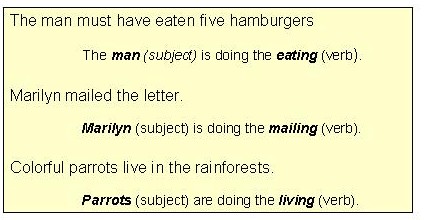
Because the subject does or "acts upon"
the verb in such sentences, the sentences are said to be in the active voice.
To see how well you understand active
voice, do Exercise 1.
Passive voice
One can change the normal word order of many
active sentences (those with a direct object) so that the subject is no longer active,
but is, instead, being acted upon by the verb - or passive.
Note in these examples how the subject-verb
relationship has changed.
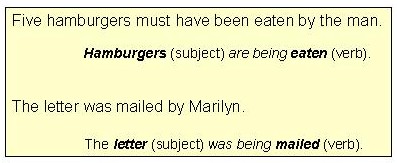
Because the subject is being "acted
upon" (or is passive), such sentences are said to be in the passive
voice.
Now do
Exercise 2.
Writers can change most sentences from active to passive
or from passive to active as desired.
To change a sentence from active to passive voice,
do the following:
1. Move the active sentence's
direct object into the sentence's subject slot

2. Place the active sentence's subject into
a phrase beginning with the preposition by

3. Add a form of the auxiliary verb be
to the main verb and change the main verb's form as required

Now do
Exercise 3.
A CAUTION ABOUT PASSIVE VOICE:
Because passive voice sentences necessarily add
words and change the normal doer-action-receiver of action direction, they may make the
reader work harder to understand the intended meaning.
As the examples below illustrate, a sentence
in active voice flows more smoothly and is easier to understand than
the same sentence in passive voice.
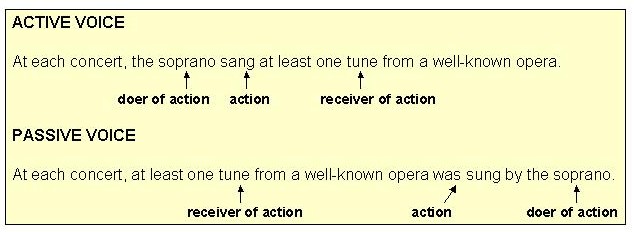
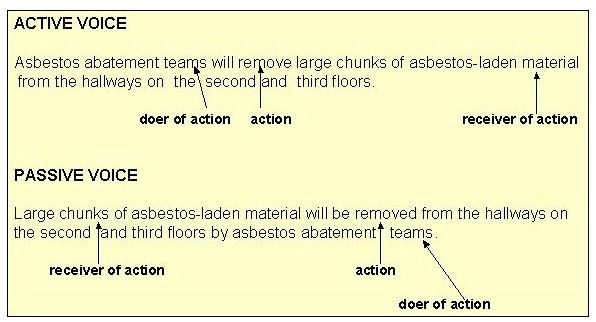
It is generally preferable to use the ACTIVE
voice.
To change a passive voice sentence into an active
voice sentence, simply reverse the steps shown above.
1. Move the passive sentence's
subject into the active sentence's direct object slot

2. Remove the auxiliary verb be
from the main verb and change main verb's form if needed

3. Place the passive
sentence's object of the preposition by into the subject slot.

Some passive voice sentences may not even mention a doer
of the action.
Example:
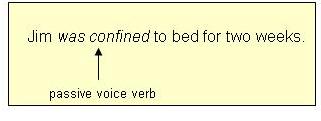
To change sentences like these into active voice, create a doer-of-the-action
subject.
Example:

Because active voice is more direct, most writers prefer to
use it whenever possible.
Now do Exercise 4.
When should one use the passive voice?
The passive voice may be a better choice when
- the doer of the action is unknown, unwanted,
or unneeded in the sentence
Examples

Since we do not
know (or need to know) who counted the ballots or who appreciates our
efforts, passive voice works fine in the example above.
The passive voice may also be a better choice when
- the writer wishes to emphasize the
action of the sentence rather than the doer of the action
Examples

The above examples emphasize what
happened -- something was broken, someone was questioned for
sixteen hours --rather than who made it happen.
The passive voice may also be a better choice when
- the writer wishes to use passive voice for
sentence variety.
Now try the post test.
|